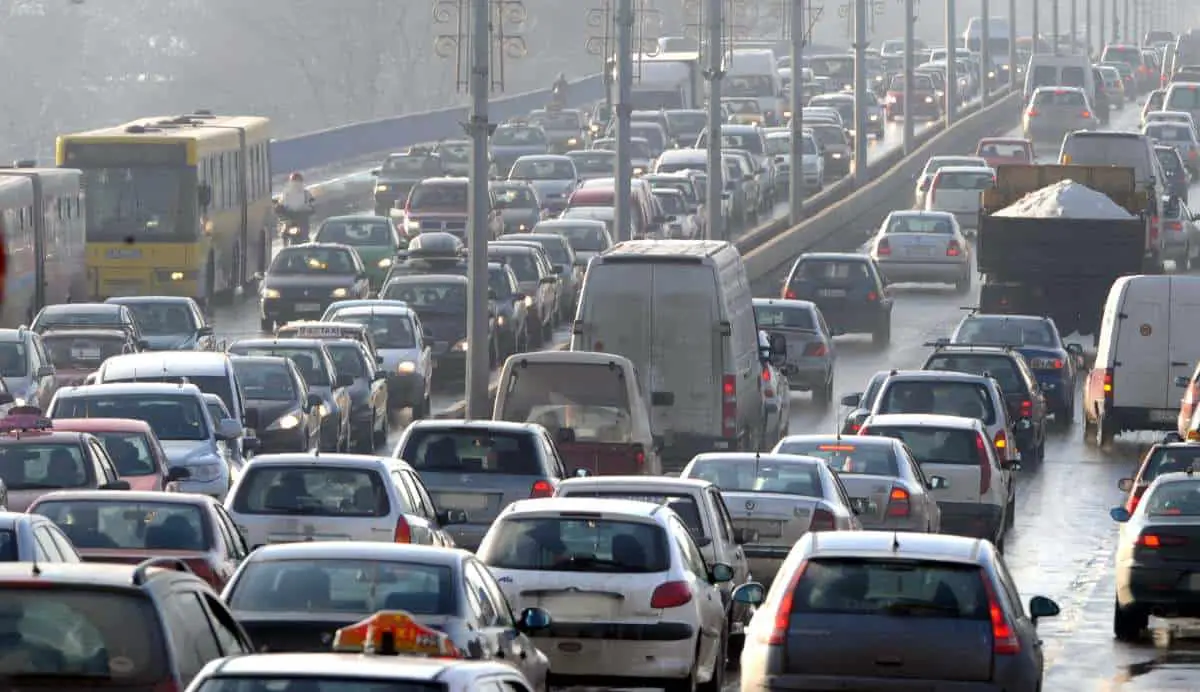The Zero Emission Vehicle (ZEV) Challenge was an initiative launched by the Climate Group and the C40 Cities in July 2018.
A pioneering initiative, the Zero Emission Vehicle Challenge aims to make a big difference to the adoption of zero emission vehicles such as electric cars by seeing cities, states, and international businesses apply their purchasing and policy making influence with this goal in mind.
The end goal of the challenge is to eradicate the serious health problems associated with air pollution caused by transport emissions, as well as the worst consequences of global warming associated with transport’s greenhouse gas emissions.
“The ZEV Challenge resonates with our belief in the electrification of the economy, and when beliefs are aligned with actions, people are happy to deliver. People get the sense of urgency and this helps us align our strategy with concrete goals.”
EDF Energy President Jean-Bernard Levy

Key Takeaways
| 1. | The Zero Emission Vehicle (ZEV) Challenge aims to end fossil-fuel vehicles and accelerate progress towards a cleaner future. |
| 2. | Hurdles to the initiative include limited availability of ZEVs in federal fleets and higher cost compared to conventional vehicles, but efforts are being made to overcome these obstacles through robust regulations and programs. |
| 3. | International cooperation is being promoted through forums like the Zero Emission Vehicles Transition Council, and many more. |
Understanding the Zero Emission Vehicle (ZEV) Challenge
The Zero Emission Vehicle (ZEV) Challenge is a landmark initiative that calls upon automotive industry leaders to shift gears from fossil-fuel vehicles and pioneer progress towards a cleaner, sustainable future.
This challenge, unveiled by The Climate Group and C40 Cities, uses the power of global purchasing to expedite the development of ZEVs.
World leaders in zero emissions called on the global auto industry to expedite the production of electric vehicles to meet rising demand, and increased concern about air pollution and greenhouse gas emissions.
For the first time, major states, regions, cities and businesses worldwide came together to demonstrate to the auto industry the substantial will and desire to transition to zero emission vehicles.
The Zero Emission Vehicle Challenge had wide-ranging support from some important players, including the following:
| U.S. States | California, New York City |
| Companies | EDF Energy, LeasePlan, Unilever |
| Cities | Los Angeles, New York, Paris, London, Milan, Rome, Copenhagen, Pittsburgh, Mexico City, Medellín |
| Regions | Australian Capital Territory, Navarra |
This initiative combines leading programs that have previously concentrated on individual sectors, amplifying their collective buying power and market influence.
However, like any substantial effort aimed at affecting large-scale change, this challenge is not without its hurdles.
Some of these obstacles include the limited availability of zero-emission vehicles in federal fleets and higher costs when compared with their conventional counterparts.
These barriers have led to concerted efforts to tackle them through robust regulations. An example of such regulation can be seen in California’s Zero-Emission Vehicle Program.
This program aims at improving air quality and reducing the state’s impact on climate change.
It exemplifies how regulatory measures can provide a push towards accomplishing the larger objective of sustainable transportation.
Role of International Cooperation and Forums in Advancing ZEVs
International cooperation plays a vital role in advancing the cause for ZEVs. One such form is through forums like the Zero Emission Vehicles Transition Council which provides political discourse around transitioning towards ZEVs.
These forums serve as vital platforms where stakeholders can share advancements, challenges faced, solutions implemented or under consideration all centered around pushing for increased usage and development of electric vehicle technologies across nations.
At a micro level too there are programs like Airport Zero Emissions Vehicle (ZEV) Infrastructure Pilot Program that facilitate use of zero emissions technologies at airports thus emphasizing how specific sectors too are contributing to this larger vision.

Global Call To Action: The Collective Push For More Electric Cars
A collective push for more electric cars is underway globally underlining how crucial it is for states, businesses, and entities representing considerable purchasing power uniting under this worldwide call-to-action, urging automakers to produce more sustainable transportation options.
There’s been a significant increase in the last ten years in multilateral efforts and commitments centred around electromobility. This surge indicates worldwide governmental backing for a fast-paced shift to zero-emission transport, giving us hope that international cooperation is a key player in decarbonisation.
Participants embrace zero emission vehicles by pledging to stimulate demand. They hope that increased demand would eventually drive down costs, making them more accessible.
This could encourage larger adoption rates among consumers, thereby reinforcing the market position for renewable energy-based options over traditional ones.
Here’s a list of some of the current ZEV initiatives, forums, and alliances:
| The Climate Group | The aim of The Climate Group is to achieve a global state of net zero carbon emissions by the year 2050, while ensuring an increase in overall prosperity. |
| C40 Cities | C40 represents an international coalition of close to 100 mayors from premier cities worldwide, brought together to tackle the issue of climate change. Their collective efforts are aimed at addressing this global environmental crisis. |
| The Electric Vehicles Initiative (EVI) | The Electric Vehicles Initiative (EVI) is a forum spearheaded by multiple governments, with its core focus on expediting the global introduction and acceptance of electric vehicles. |
| International Council On Clean Transportation | The primary objective of ICCT is to eradicate the negative impacts on climate and health caused by the transport sector. This necessitates a global transition towards clean transportation systems. The strategy involves fostering collective action around suitable policies and solutions. |
| The Accelerating to Zero (A2Z) Coalition | Established in November 2022, the goal is to have all new cars and vans sold worldwide be Zero Emission Vehicles (ZEVs) by 2040. In advanced markets, this target is set to be achieved no later than 2035. |
| International Zero-Emission Vehicle Alliance (ZEV Alliance) | Members of the International Zero-Emission Vehicle (ZEV) Alliance acknowledge the vital necessity to cut down on greenhouse gas emissions originating from the transport sector, in order to avert the most severe impacts of climate change. |
| ZEV Transition Council | The Zero Emission Vehicles Transition Council represents a global platform that aims to strengthen political collaboration in the process of transitioning to zero emission vehicles (ZEVs). |
| ZEV Community | The ZEV Community acts as a platform for sharing optimal strategies among various government tiers. It aids in bolstering their goals and accelerating the consolidation of policies in a vertical manner. |
| Zero Emission Vehicle Awareness Initiative | The Zero Emission Vehicle Awareness Initiative (ZEVAI) is a program that backs up endeavors which strive to enhance public understanding, familiarity and trust in zero-emission vehicles (ZEV). |
| The Zero-Emission Government Fleet Declaration | The goal, established in September 2022, is to achieve a fleet of 100% zero-emission cars and vans in government use. Furthermore, there is an aspiration to have 100% zero-emission trucks and buses purchased, all to be accomplished by the latest, 2035. |
| The Global Memorandum of Understanding (MoUj) on Zero-Emission Medium and Heavy-Duty Vehicles | In 2021, a pledge was made by participants to collaborate in order to reach the goal of having 100% Zero-Emission Vehicle (ZEV) sales for buses and trucks by 2040. They also set a preliminary target of achieving 30% by 2030. |
The Broader Scope Of The Zev Challenge: Creating Zero-Emission Manufacturing Environments.
The scope extends beyond just manufacturing zero-emission vehicles – it involves creating zero-emission manufacturing environments addressing environmental concerns holistically associated with vehicular emissions.
These endeavors are not strictly centered around technology; they also involve crucial policy revisions. These changes aim to have a broader impact, ensuring that all aspects, whether directly or indirectly related, stay aligned with the overall goals set under the ZEV Challenge.
In essence, driving forward clean energy initiatives requires looking into every aspect tied up with automobile production. Right from sourcing raw materials till the final product delivery, it is crucial to ensure sustainability principles get imbued throughout all process stages. This approach can boost green technology adoption across the sector.
- Tesla Charger Installation Cost (Home Setups) - March 1, 2024
- Tesla Phone Key Disconnected (Troubleshooting Guide and Quick Fixes) - March 1, 2024
- Tesla FSD 12 (Explained) - March 1, 2024